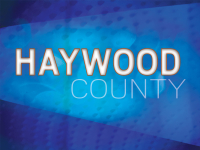Haywood Schools performance climbs high in tandem with county funding support
 Haywood County Schools will get a modest 2 percent increase each year for the next three years in its student per capita funding from the county.
Haywood County Schools will get a modest 2 percent increase each year for the next three years in its student per capita funding from the county.
That was the pledge Haywood County commissioners made to the school board this week. Both the commissioners and school board approved the funding plan at their respective meetings Monday evening.
The gentlemen’s agreement between the school board and commissioners renews the long-standing, so-called “school funding formula” for another three years.
Under the funding formula, county commissioners have consistently and incrementally increased per student funding over the past dozen years.
In 2003, the county funded schools to the tune of $1,420 per student. Today, it’s up to $1,940 per student, according to county finance data.
Before parents get too excited that the schools will be flush with text books and field trip budgets, consider this: the increase in local funding won’t be enough to offset losses from state budget cuts over recent years.
Related Items
And it will quickly be eaten up by higher costs faced by the schools each year, from picking up the local share of the tab for state-mandated teacher salary increases to mounting, obligatory pension payments.
“The cost of everything is going up,” said School Board Member Jim Francis. “We’re trying to keep up with the cost of fuel, the cost of insurance, the cost of retirement contributions we have to make, the maintenance of our buildings, the raises the state gave teachers.”
If the county’s nominal per student increase isn’t enough?
“Hopefully it will be enough,” Superintendent Anne Garrett replied. “If not, we will have to dig deeper.”
Still, school board members and school officials lauded the funding formula. It’s a novel approach to school funding. Most counties merely give lump sums year after year, often ignorant of inflation forces or student capita fluctuations.
Haywood has been heaped with accolades at the state level and held up as a model in school and local government circles for its methodology, according to Commissioner Mark Swanger. But it wasn’t always that way.
Budget time was historically marked by school funding wars, pitting education supporters against county commissioners over how much funding the schools got from the county each year.
“It seemed to be a number was picked out of thin air,” said Swanger, who was on the school board in those days. The schools budget was subject to “wild swings” based on the political will du jour, Swanger recalled.
A truce was called in 2004. Commissioners at the time agreed to provide consistent, predictable school funding year after year with a built-in increase to cover inflation — predicated on a per student formula.
Commissioner Bill Upton said he knows what it is like to be at the mercy of the funding whims of commissioners. He was both a principal and superintendent in the old days before the funding formula.
Simply not knowing from year to year what the budget would be was nearly as bad as being underfunded, Upton said.
The funding formula removes the guesswork. School leaders have a reasonable idea of how much money they’ll have to work with in coming years — rather than on the eve of each new school year.
“You will see a very consistent pattern emerge of being able to plan,” Swanger said.
Upward momentum
Haywood County is one of the more well-heeled school districts around the state. It currently ranks 20th out of 100 county-run school districts statewide in the per student funding it gets from local coffers.
Likewise, Haywood County is among the top-performing school districts in the state based on test scores. Haywood’s public schools had the 15th highest test scores in the state. It ranked in the top 13 percent of all 115 city and county school districts.
While performance isn’t always tied to funding, Haywood’s rise in academic performance rankings has paralleled the steady increase in per student funding from the county.
Ten years ago, Haywood County Schools were ranked 40th statewide compared to 15th today, according to state statistics kept and compiled by Assistant Superintendent Bill Nolte.
A gamble
The funding formula comes with a few critical caveats.
Chiefly, the schools’ overall budget could actually go down, even though the per student funding will go up.
That’s because the formula is based on the student head count each year — $1,940 per student, times the total number of students in the school system.
If student count goes down by much, then the overall funding for the school system will drop — a possible scenario in light of a charter school proposed to come online next year that could siphon students away from the public school system.
Coming to consensus
The renewed funding formula passed by the county commissioners and school board this week had been hammered out in private negotiations ahead of time by delegates from each board. The rest of their elected boards merely rubber-stamped the agreement that had been brokered.
On the county’s end, Commissioner Kirk Kirkpatrick and Swanger — who were on the county board when the funding formula was first created and are still on the board today — acted as liaisons. And in the school’s end, it was school board members Chuck Francis, Jim Francis and Walt Leatherwood.
After meeting privately to draw up a funding formula, the team of liaisons floated what they’d come up with to their respective boards.
The various members of both boards signaled their agreement in private communications with one another, so by the time the county commissioners and school board meetings rolled around Monday night, the vote was essentially a done deal.
Swanger said he saw no problem with hashing out a funding formula privately between select members of each board.
“There was nothing untoward about it,” Swanger said.
Nonetheless, the public was not privy to whatever give and take took place, or the real-time thought-process the elected leaders of both the school board or county board used to arrive at the decision.
After the fact, elected leaders on both boards spoke openly about how they arrived at the formula and their thoughts on it, however.
Somewhat ironically, the commissioners and school officials have a school budgeting workshop scheduled for Thursday (April 23). But with the funding formula sewed up, the only thing left to talk about is the building and grounds maintenance budget, which can be a beast of its own.
Catch-up time
Commissioners included an escape clause in the funding formula should the recession flare back up.
Commissioners had caught flack for not following the funding formula during the recession from their chief anti-government critic, Monroe Miller.
Miller’s beef, which he has expounded on in voluminous emails and web posts over the past year, appeared to be less about actual school funding and more about whether commissioners were candid when they backed off the funding formula.
During the recession, commissioners did make note publicly — it was reported in newspaper articles, in fact — that they weren’t keeping pace with incremental year-over-year per student funding increases called for under the formula.
But Miller complained that commissioners continued to pat themselves on the back for the funding formula all the while, despite suspending it, and questioned what the point of a formula is if you don’t adhere to it.
However, school board officials realized that desperate times derailed the formula and were appreciative the county maintained schools funding to the extent it did.
“It wasn’t until the great recession that we deviated from it,” Swanger said.
Regardless, the funding formula is back on track now.
And an effort has been made in the new formula to make up for some lost time. The old formula averaged a smaller built-in increase than the 2 percent built-in increase for the next three years.
“We’ve had a reset year, is the way I look at it,” said School Board Chairman Chuck Francis.
When passing a new version this week, commissioners were careful to include a caveat this time: they would stick to the built-in 2 percent increase in per student funding “unless unusual economic conditions dictate otherwise.”
Hopefully that will cut both ways.
“I feel confident if things turn up, they will turn it up,” Francis said.









